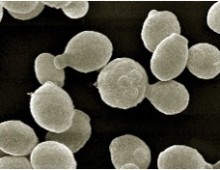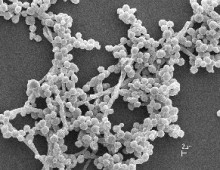Introns are the parts of a gene sequence that are not expressed in the protein. In the August 30 issue of Nature Communications, a team led by DOE JGI’s Eukaryote Program head Dan Rokhsar and Uffe Hellsten describe a potential mechanism by which introns have been added to a genome sequence since what they refer…
A “meraculous” way to conduct whole-genome assemblies
The dramatic shift in sequencing technologies that allows genome researchers to generate the equivalent of a single human genome in days rather than the decades it took multiple organizations to complete a single one has also shifted the bottleneck from sequence production to sequence assembly. For example, the Sanger platform routinely produced reads 700 basepairs…
DOE JGI’s Prochnik in Discovery News
“This one-celled organism hunts and eats bacteria as an amoeba, swims around looking for a better environment as a flagellate, and then hunkers down and waits for good times as a cyst,” said Simon Prochnik, a computational scientist at the U.S. Department of Energy’s Joint Genome Institute. “It is a very rare process to go…
Xylose-fermenting yeast project in Ethanol Producer
Using Mother Nature as their teacher, researchers at the U.S. DOE’s Great Lakes Bioenergy Research Center, along with the DOE’s Joint Genome Institute, have sequenced the genomes of two types of yeasts found in bark beetles and then compared and contrasted the results with other yeasts’ genome sequences to determine which can best convert the…
Toward a Better Understanding of Soil-Microbe Interactions
In the August 2011 issue of the Journal of Bacteriology, a team of researchers led by DOE JGI’s Patrick Chain at Los Alamos National Laboratory focused on a microbe that can help or harm as the case may be. Ochrobactrum anthropi thrives in a variety of habitats including polluted soil, plants and even higher mammals….
Another Brown Mercury Producer Genome Sequenced
In the August edition of The Journal of Bacteriology, a group of scientists including several DOE JGI researchers and longtime collaborator Judy Wall of the University of Missouri described the genome for Desulfovibrio africanus, a sulfate-reducing bacterium isolated from Namibia that doesn’t require oxygen for its survival. Like the Desulfovibrio species sequenced as recently as…
Sweetening the Biofuels Production Process
Currently, converting cellulosic biomass into biofuels is inefficient and costly. One of the barriers to reducing costs and yields is that xylose, a five-carbon sugar that represents nearly half of available sugars in plant (in the form of hemicellulose), is extremely difficult and time-consuming to break down using enzymes sourced from conventional yeast strains. In…
Eucalyptus genome project on Science in Public
The genome of one of Australia’s biggest Eucalyptus trees, the Flooded Gum or Eucalyptus grandis, has now been mapped, allowing scientists and conservationists an insight into the secrets of an important piece of Australiana.Eucalyptus has become the most popular plantation tree in the world – with millions of hectares planted in Africa, America, Europe and…
Ethanol Contaminant Could Assist Production Efficiency
An Ethanol plant in Bairstown, Iowa (Courtesy of USDA) In the August edition of The Journal of Bacteriology, researchers led by long-time collaborator David Mills of the University of California Davis, and including DOE JGI’s Alex Copeland, Olga Chertkov and Lynne Goodwin, announced the completed genome sequence of Lactobacillus buchneri and has now been made…
Dry rot (Serpula) genome on ScienceNewsline
As reported online July 14 in Science Express, an international team of scientists including DOE JGI researchers compared the genome of Serpula lacrymans, the second brown rot fungus to have its genome sequenced, against 10 other published fungal genomes. The DOE JGI sequenced seven of these genomes among them Postia placenta, the first brown rot…

